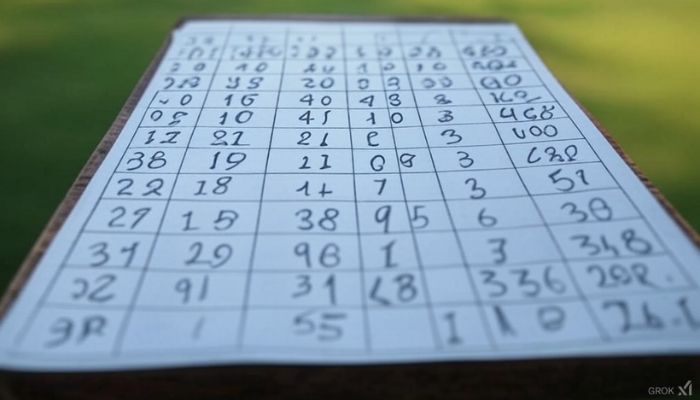We’ve covered the basic rules of golf, let’s delve into the scoring system. Understanding How Golf Scoring Works is crucial, as it allows you to track your progress and set goals. Don’t worry; we’ll break it down step by step in simple terms.
The Concept of Par
In golf, each hole has a designated number of strokes that an expert golfer is expected to take to complete it. This number is called “par.” Holes are typically classified as par-3, par-4, or par-5, depending on their length and difficulty. For instance, a par-3 hole is shorter and expected to be completed in three strokes, while a par-5 hole is longer, requiring five strokes.
Scoring Relative to Par
Your performance on each hole is measured against its par. Here’s how it breaks down:
- Birdie (-1): Completing the hole one stroke under par. For example, finishing a par-4 hole in three strokes.
- Par (E): Completing the hole in the exact number of strokes designated.
- Bogey (+1): Finishing the hole one stroke over par.
- Double Bogey (+2): Two strokes over par.
- Eagle (-2): Two strokes under par.
- Albatross or Double Eagle (-3): Three strokes under par, which is quite rare.
- Condor (-4): Four strokes under par; extremely rare and not typically seen in professional play.
Keeping Score: Stroke Play
The most common scoring format in golf is called “stroke play.” In this format, you count every stroke you take on each hole, aiming for the lowest total score over the entire round. At the end of your game, you add up all your strokes to get your total score. The player with the fewest strokes wins.
An Example Scorecard
To illustrate, here’s a simple example of how a scorecard might look after a 9-hole round:
| Hole Number | Par | Your Strokes | Score Relative to Par |
| 1 | 4 | 5 | +1 (Bogey) |
| 2 | 3 | 3 | E (Par) |
| 3 | 5 | 4 | -1 (Birdie) |
| 4 | 4 | 6 | +2 (Double Bogey) |
| 5 | 3 | 2 | -1 (Birdie) |
| 6 | 4 | 4 | E (Par) |
| 7 | 5 | 5 | E (Par) |
| 8 | 3 | 4 | +1 (Bogey) |
| 9 | 4 | 3 | -1 (Birdie) |
In this example, your total strokes are 36. If the course par for these nine holes is 35, your score would be +1, meaning one stroke over par for the round.
Match Play: An Alternative Scoring Method
Another popular scoring format is “match play.” Instead of counting total strokes, each hole is a separate contest. If you take fewer strokes than your opponent on a hole, you win that hole and go “1 up.” If your opponent takes fewer strokes, they go “1 up.” If you both take the same number of strokes, the hole is “halved.” The match continues until one player is ahead by more holes than remain to be played.
Stable ford Scoring System
The Stableford system assigns points based on your performance relative to par on each hole:
- 0 points: Two or more strokes over par.
- 1 point: One stroke over par (Bogey).
- 2 points: Par.
- 3 points: One stroke under par (Birdie).
- 4 points: Two strokes under par (Eagle).
- 5 points: Three strokes under par (Albatross).
In this system, the goal is to accumulate the highest number of points. It’s particularly beginner-friendly because a bad hole doesn’t drastically affect your overall score.
Tips for Keeping Score

- Use a Scorecard: Most courses provide scorecards that list the par for each hole. Use it to record your strokes after each hole.
- Stay Honest: Accurate scoring is essential. If you’re unsure whether to count a stroke (e.g., for a penalty), consult the rules or ask a fellow player.
- Practice Mental Math: Being able to quickly calculate your score relative to par can help you make strategic decisions during your round.
Common Scoring Terms Recap
- Par: Number of strokes an expert golfer is expected to take.
- Birdie: One stroke under par.
- Eagle: Two strokes under par.
- Bogey: One stroke over par.
- Double Bogey: Two strokes over par.
Final Thoughts
Understanding golf scoring enhances your appreciation of the game and allows you to set personal benchmarks. Remember, everyone starts somewhere, and the key is consistent practice and learning from each round.
In our next post, we’ll dive into the golf terms par, birdie, bogey, eagle, and double bogey. Understanding these key golf terms will enhance your knowledge of scoring and improve your overall game strategy. Stay tuned
















Leave a Reply